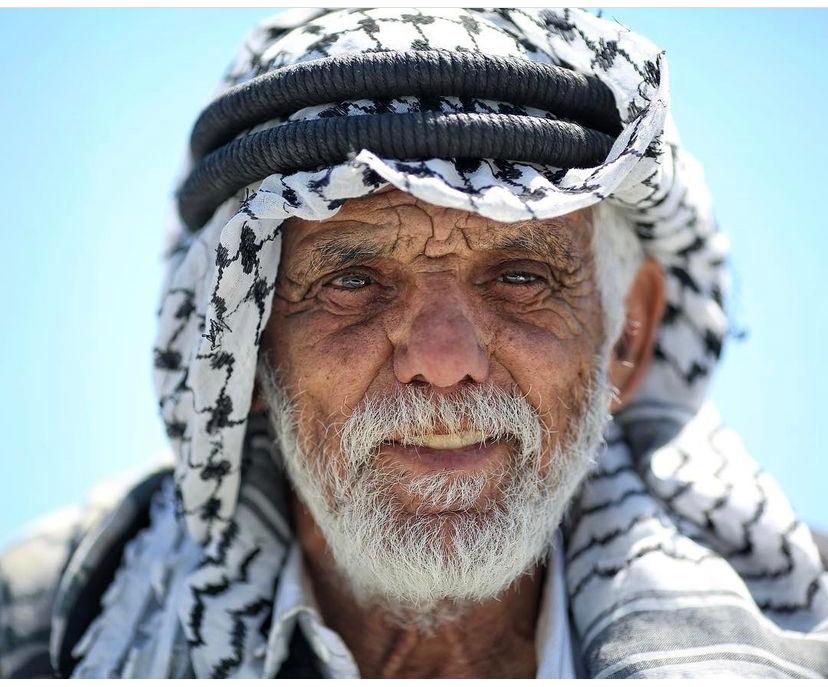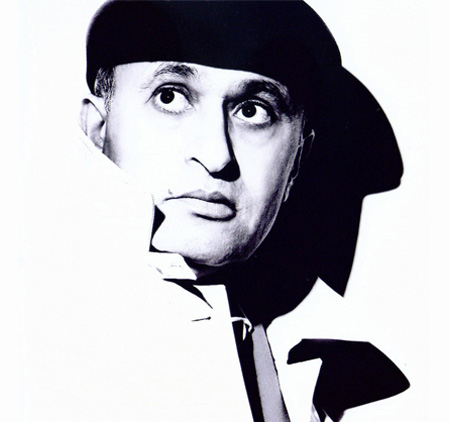
Special thanks to the talented Palestinian photographer ‘Ayman Abu Ramouz’ who captured the evocative image above.
There are many variations to the name of this simple and popular headdress: Kufiyyeh, keffiyeh, Chufieyyeh, Hattah, Chadiyah, and many more; all refer to the headdress made popular by Palestinians in various situations, but not always with positive connotations.
The cotton cloth headdress can be traced back to the Mesopotamians who wore this garment as a protection from the fierce sun heat of the region. It survived for centuries, gradually adopted by different tribes, especially the nomadic Bedouins who traversed the region and mastered the art/science of surviving in the harshest of environments, the desert.
When the Ottomans conquered the region, including the Levant, they did not care much for the kufiyah which they saw as a potential symbol of rebellion. They rather preferred that the locals wore the Turkish fez instead and those who defiantly wore the traditional headdress were marked as trouble makers.
The Great Palestinian Revolt between 1936 and 1939 against the British Mandate of Palestine saw atrocities committed by the occupier and the kufiyah came to prominence as the symbol of the resistance movement. After World War II, the state of Israel was established and resistance to the British occupation turned into an existential challenge of the survival of Palestine as a state, culture and autonomous entity.
Up until the 1960s, the kufiyah came in various colours and patterns; in the same region, or even village, the kufiyah was plain white, black, yellow, orange, or patterned in red or blue or black thread. In the early 1960s, a Palestinian resistance movement was born, which eventually came to be known as the Palestine Liberation Organisation (PLO), headed by Yasser Arafat. The Kufiyah came back to prominence when Yasser Arafat and his resistance fighters adopted the headdress, shown in the picture above, as the symbol of defiance. This time however, the white kufiyah with black pattern came to represent the Palestinian struggle for freedom and return to their homeland. It is strange that a piece of utility cloth came to represent a people alongside their national flag. The tricolour flag of black, white and green with a red triangle cutting across the three stripes, is always held aloft in demonstrations, celebrations, sporting events and other large crowd gatherings. But the kufiyah is always there on display as well.
Setting all of the above aside, we must not forget the original purpose of the Kufiyah, which is a practical item of clothing to protect the wearer from the cold of winter or fierce heat of the summer. an optional extra is the ‘Agal’ the black rope intended to keep the headdress in place. The simplicity and adaptability of the Kufiyah to various situations is, I believe, the secret of its longevity and success. Whether praying, ploughing the land, tilling, harvesting, chopping wood, or dancing, you wore it in different ways to make sure it doesn’t get in the way of the task in hand. I have seen men take their Kufiyahs and baring their heads to show deep disappointment like the loss of well-respected figure or senior family member. I have also seen men wear the headdress with the inside out where the pattern is less pronounced as a sign of mourning for someone close.
I am not sure of the origins of the current dominant pattern, which closely resembles a fishnet design, it could be a case of taste or the setting of the weaving machines. As for the multiplicity of the colour of the cloth or the colour and style of the patters, I think it is a case of ‘me too’ attitude where every region decided to adopt a certain style. Individuals tend to choose one style over another in recognition of the occasion such as formal events where more expensive kufiyahs with elaborate tassels are worn.
In more recent times, the black fishnet pattern on white background, now firmly associated with Palestine, has been adopted by young people from as far east as Japan to the Western Coast of the USA. Some wear it as a fashion accessory, while others as a sign of solidarity with the Palestinian cause.
As symbols go, I am proud of this simple item of clothing that came to represent the people of Palestine. I would rather have this piece of cloth than a gun, sword, a lion or any of the other symbols that claim strength, aggression, and superiority over others. The fact that it proved adaptable as a symbol of resistance is something that can be argued about ad nauseum. Suffice it to say that it was never adopted, as some detractors claim, to hide the identity of the wearer. On the contrary, it was always worn with pride and to assert the identity and heritage of the individual and the people of Palestine.
Finally, if you have the time and inclination to do so, why don’t you look up this song on YouTube by the hip-hop Palestinian/British rapper called Shadia Mansour. You don’t need to understand Arabic to appreciate the message she conveys in the song. She does express views you may or may not agree with; for example, she says that the adoption of the headdress by ‘non-Arabs’ is a cultural appropriation, I personally do not agree and will always be happy to see other nationals wear the kufiyah. The link to the song is: https://www.youtube.com/watch?v=21OXQ4m1-Bo
Thank you, Faye for suggesting this topic as the first in the ‘Eternal Palestine’ category.



I was waiting for a post of this kind from you, Mufid! So glad Faye proposed it. Great minds….
You and your family have been in my thoughts x
The anthropologist in me enjoyed this post 😉 xxx